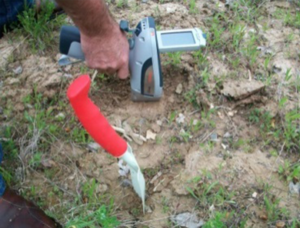Project Highlights
- Joint consultant for 3 parties named in imminent and substantial endangerment determination and order and remedial action orders
- Site characterization of school property and adjacent industrial property (PB, as, PAH’s, Dioxin)
- Archeological evaluation of trash (cultural debris) to assist determine site history
- Human health risk assessment (HHRA)
- Participate in negotiations with 3 parties and Department of Toxic Substances Control (DTSC)
EEC Environmental (EEC) was retained by three parties who had been named Potentially Responsible Parties (PRPs) for a 14-acre site that includes a K-12 school and adjacent warehouse building. A portion of the site was a former manufactured gas plant (MGP). The Site is impacted by lead, arsenic, PAH’s, and dioxins (COCs). The source of the contaminants are in question, but may be related to one or more sources including pesticides and herbicide use, the former MGP, burning and burial of debris, and use of lead-based paints of building structures. In an effort to further assess the extent and magnitude of hazardous substances at the site, EEC prepared on behalf of the three parties, and in accordance with the Orders issued by the Department of Toxic Substances Control (DTSC), a Site Conceptual Model (SCM) which included comprehensive research as to the historical activities on the site. EEC then conducted two Remedial Investigation (RI) events to further characterize and COCs. Investigation activities included drilling over one hundred borings for the collection of soil samples and conducting exploratory trenching for the collection and archiving of historic cultural debris under the direction of an archeologist to assist in identifying site history for potential allocation of financial responsibility between the parties.
EEC subsequently prepared a HHRA. The objectives of the HHRA were to estimate potential human health risks associated with exposure to COCs detected in surface and subsurface soil at the School and warehouse properties in the absence of remediation and provide a basis for remedial actions and/or risk management decisions. The HHRA addressed potential onsite exposure to school students and staff; school maintenance workers; warehouse staff; and construction workers. Potential exposures to COCs (potential hazardous chemicals or elements associated with the Site that is present at concentrations higher than background levels) detected in shallow soils were evaluated for both direct pathways and indirect pathways.
Because the project is on a K-12 school site, Quality Assurance/Quality Control (QA/QC) and investigation planning, and timely deliverables were critical. Logistical issues caused by the islands remote location also required strong planning by project managers. Remedial investigations included the preparation of Health and Safety Plan, a Field Sampling Plan (FSP), a Quality Assurance Project Plan (QAPP), and a Project Management Plan (PMP).
EEC also supported the public participation program for the DTSC. EEC’s public outreach team prepared and implemented a community relations program to provide the community with information regarding environmental site investigations at the school site. EEC developed a Community Survey and several Work Notices to update the community on ongoing site investigation activities at the Site.



